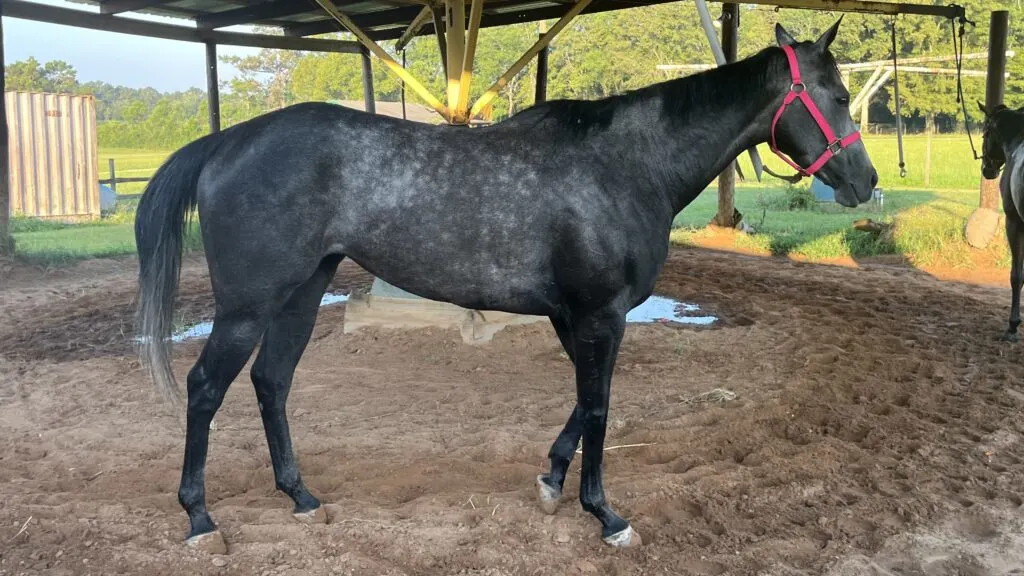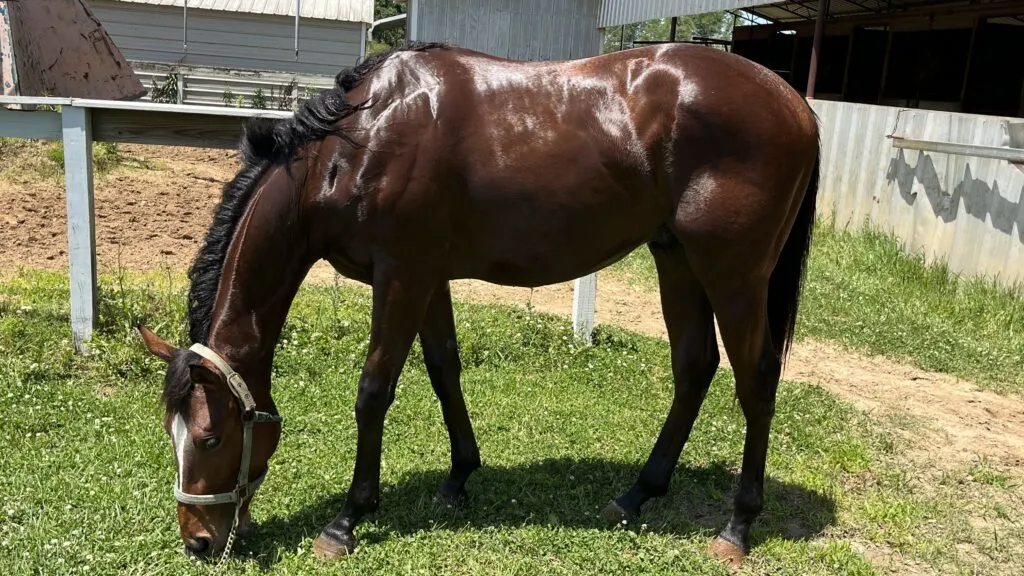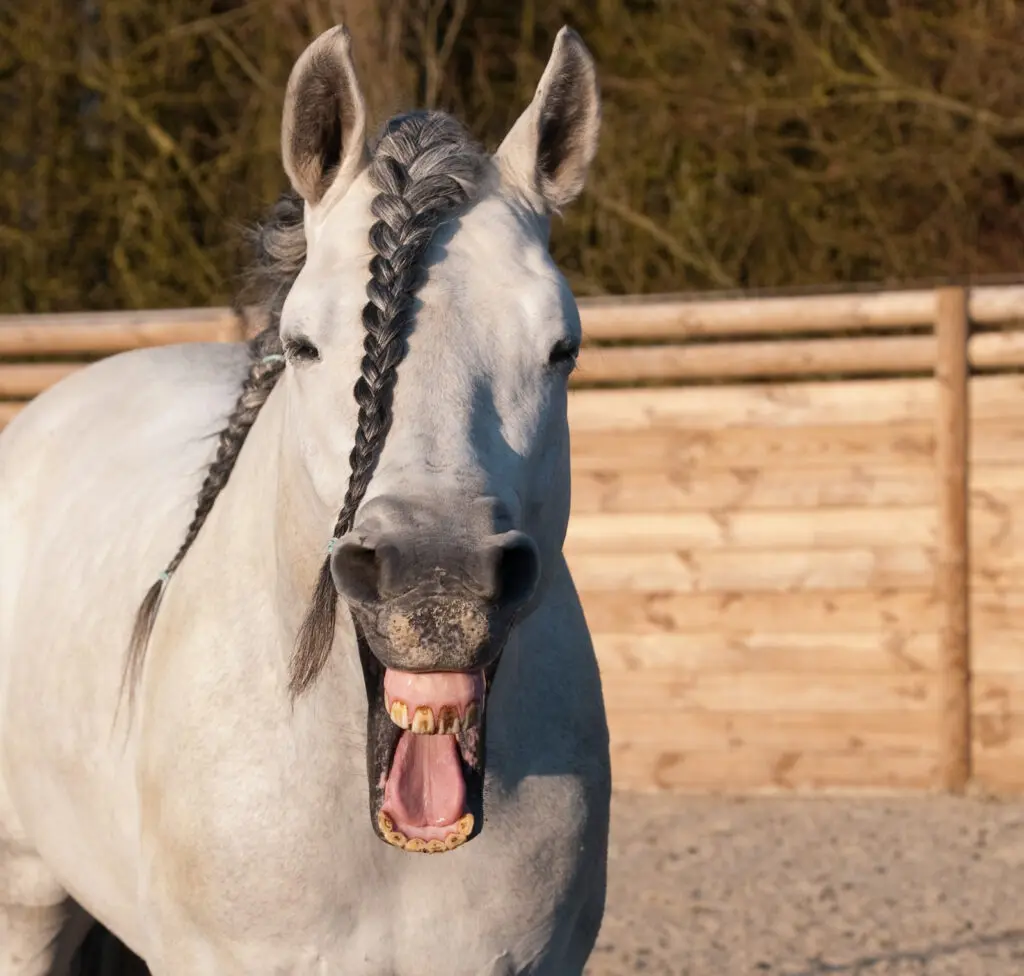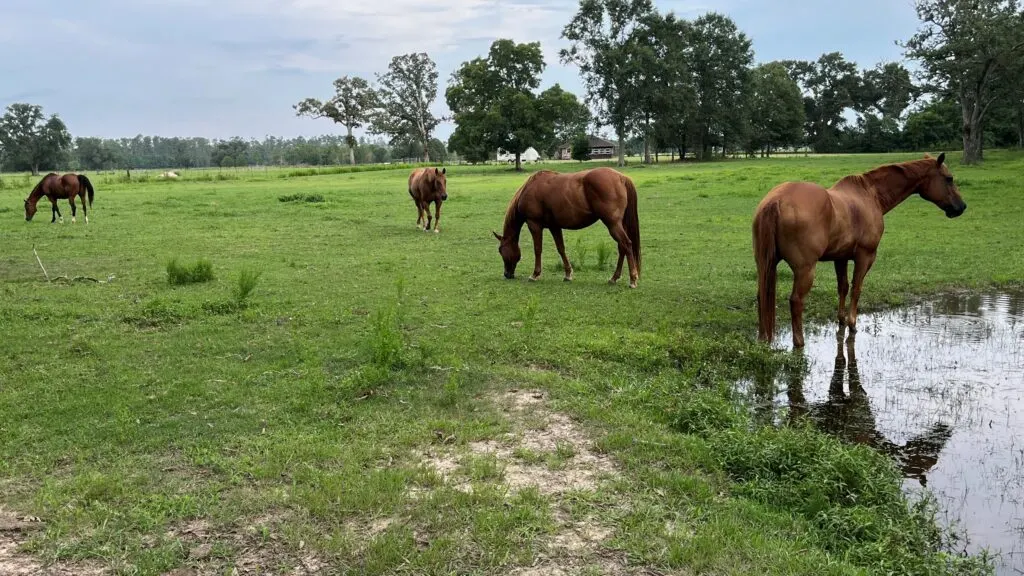Last updated: July 10, 2023
Any links on this page that lead to products on Amazon are affiliate links and I earn a commission if you make a purchase. Thanks in advance – I really appreciate it!
While feeding our horses the other day, an intriguing question popped into my head: Why can’t horses throw up? Many folks who care for horses know about this unusual fact, but not everyone understands why it happens. So, l decided to dive into this exciting horse mystery.
Horses can’t vomit due to a peculiar physiological trait: the presence of a powerful lower esophageal sphincter. Acting as a one-way gate, this sphincter tightly regulates the passage of food and water from the esophagus into the stomach. However, its muscular strength is so formidable that it prevents the reverse journey of stomach contents, preventing any possibility of regurgitation.
But this is merely a single thread in the rich tapestry of the equine digestive system. The reason why horses can’t throw up isn’t an isolated quirk—it’s connected to a multitude of biological intricacies. So, why don’t we journey further?

The Role of the Stomach and Why Horses Can’t Vomit
Beneath the majestic physique of a horse lies a remarkable digestive system that sets these creatures apart from many others. At the heart of this system is the stomach, a vital component that plays a unique role in a horse’s life. But what sets the horse’s stomach apart from others? And what does it have to do with a horse’s inability to vomit?
The horse’s stomach is relatively small compared to its body size and can hold only about 2-4 gallons at a time. It’s designed to process small, frequent meals, mimicking the horse’s natural grazing habits. Unlike in humans, the horse’s stomach secretes acid continuously, even when empty, making it vital for horses to eat regularly to buffer the acid and avoid digestive discomfort.
How the Mighty Sphincter Prevents Horses from Vomiting
Now, here comes the connection between the horse’s stomach and its inability to vomit. Situated between the stomach and esophagus is a powerful muscle ring known as the lower esophageal sphincter. It’s considerably stronger in horses than in many other animals.
This muscle’s primary role is to allow food and water to pass down into the stomach and, crucially, to prevent them from coming back up. In other words, it acts as a one-way valve, maintaining a strict ‘no return’ policy.
Because the horse’s lower esophageal sphincter is so strong, it can’t relax in the way it would need to for vomiting to occur. This fact, combined with the angle at which the esophagus enters the stomach, means that when the horse’s stomach is filled with gas or food, the sphincter is further sealed rather than being forced open. Consequently, horses are physically incapable of vomiting.
This unique feature of a horse’s anatomy serves as a protective measure to prevent them from choking on their vomit or inhaling food particles into their lungs, which could lead to severe health issues. However, it also means that horses must be carefully managed to avoid overeating or consuming something harmful, as they lack the “safety valve” of vomiting that many other species possess.
Other factors
Besides the strength of the sphincter, other factors help keep the valve closed. The location of where it joins the stomach is at an angle that presses it closed when distended with gas. As we all know, our stomach muscles contract when we vomit; for a horse, this action’s almost impossible.
Because their abdominal muscles are located inside their rib cage, making it extremely difficult for them to contract and assist the vomiting process. It’s also believed horses don’t have a vomiting reflex.
But, with all that said, what we do know is that the lower esophageal sphincter doesn’t allow a horse’s stomach content to pass back into the esophagus, which is the primary reason a horse can’t vomit.

Does Vomiting Serve a Purpose?
While vomiting might seem unpleasant, it serves a vital purpose for humans and many animals. Vomiting is a defensive system that removes harmful substances, such as poisons or pathogens, from the stomach. Animals use their senses of taste and smell to detect unsuitable food, but these senses are not infallible. When they fail, vomiting steps in as a protective mechanism.
Nausea and vomiting are designed to err on the side of caution, triggering easily to ensure harmful substances are expelled. However, vomiting isn’t always defensive. Some animals regurgitate food for various reasons, such as ruminants that bring up cud for re-chewing or bird species that vomit pre-digested food to feed their offspring.
How Horses Adapted to Survive Without Vomiting
Interestingly, horses have evolved to live without the ability to vomit. Their discerning eating habits, gradual grazing, and rapid digestion prevent the consumption of harmful substances. Over time, they’ve developed physical adaptations, like strong sphincter muscles, to aid in digestion and prevent regurgitation, which has been crucial for survival.
Consider the scenario of a fleeing horse: as it runs, its intestines exert pressure on the stomach. If the lower esophageal sphincter wasn’t strong enough to stay closed under this pressure, the horse would vomit during these rapid escapes, putting it at risk of capture. This evolutionary adaptation prioritizes immediate survival over the ability to expel harmful substances.

The Risks of a Horse’s Inability to Vomit.
However, the inability to vomit exposes horses to unique risks. Overeating, for example, can lead to significant health complications, such as colic and laminitis. Anecdotal evidence emphasizes the importance of careful feeding and immediate attention to any signs of digestive distress.
In the face of digestive disorders, it is crucial to contact a veterinarian and address the situation promptly. While not all cases of colic in horses relate to their inability to vomit, many instances are linked. Understanding the unique characteristics of horse digestion and promptly responding to symptoms can help prevent severe health problems and ensure the well-being of these remarkable animals.

Overeating
When I was recently feeding our horses, I took my eyes off one of the grandchildren, and he filled a bucket with sweet feed. The horse was eating as fast as he could. Horses that overeat grain risk significant complications to their intestinal health, causing abdominal pain, colic, and diarrhea.
Horses may even develop laminitis, which typically doesn’t present symptoms until a few days later. Our horse didn’t consume enough grain to cause a problem; severe issues arise when a feed door is left open, and a horse or horses eat for an extended time.
But in the past, I’ve owned horses that developed colic. This condition doesn’t happen in most animals because they can vomit and release pressure in their stomachs. If you suspect your horse is colicky, you should keep him on his feet and try to lead him around; this may help relieve some intestinal pressure. It’s also critical to contact your vet right away.
You should also notify your horse care professional when horses eat too much high-starch grain. Addressing these problems quickly is of utmost importance to prevent or lessen the severity of the damage.
Numerous things cause colic, and some are not related to a horse’s failure to throw up, but many instances are.

What Happens if a Horse Throws Up?
Should a horse ever manage to vomit, it’s a dire emergency, signaling a potentially life-threatening condition. Immediate veterinary attention is crucial. Such an event typically implies a catastrophic failure in the digestive system, often a stomach rupture due to extreme internal pressure.
Horses possess an unusually strong lower esophageal valve that withstands substantial pressure. When extreme pressure builds in the stomach, it may result in a devastating rupture of the gut or esophagus. This horrific event may seem like vomiting, but it’s an extreme medical crisis far beyond a simple regurgitation.
Most horses die when they vomit. However, there are reported instances of horses that threw up and survived, but this is rare.
What Other Animals Can’t Throw Up
While most mammals are capable of vomiting, there are a few exceptions, including horses, rabbits, and certain rodents like mice, squirrels, and guinea pigs. Mice are particularly susceptible to poisons due to their inability to regurgitate.
Beyond mammals, the majority of vertebrates, such as fish, reptiles, and birds, possess the ability to vomit. However, certain species, like frogs and, as previously mentioned, rabbits, stand as unique exceptions, with their digestive systems designed to prevent regurgitation.
Below is a helpful YouTube video explaining why horses can’t vomit.
FAQs
Can horses burp?
Yes, horses can and do burp or eructate to release excess gas from their stomachs. The horse’s one-way lower esophageal sphincter primarily allows food and water to pass into the stomach and limits the amount of gas that can escape via burping. Therefore, while horses can burp, it’s not a primary or frequent method of gas release for them.
How do you get gas out of a horse?
To help a horse expel gas, walking them around can be beneficial. Light exercise stimulates movement in the gut, aiding gas passage. Some horse owners find gentle belly massages helpful. However, if the horse is showing signs of severe discomfort or colic, a veterinarian should be contacted immediately to prevent serious complications.
Meet Miles Henry
An avid equestrian and seasoned racehorse owner, Miles Henry brings his extensive experience to the equine world, proudly associating with the AQHA, The Jockey Club, and various other equine organizations. Beyond the racetrack, Miles is an accomplished author, having published various books about horses, and is a recognized authority in the field, with his work cited in multiple publications.
🔗 Connect with Miles:
Twitter
Facebook
YouTube: Check out race highlights, horse care tips, and more!

